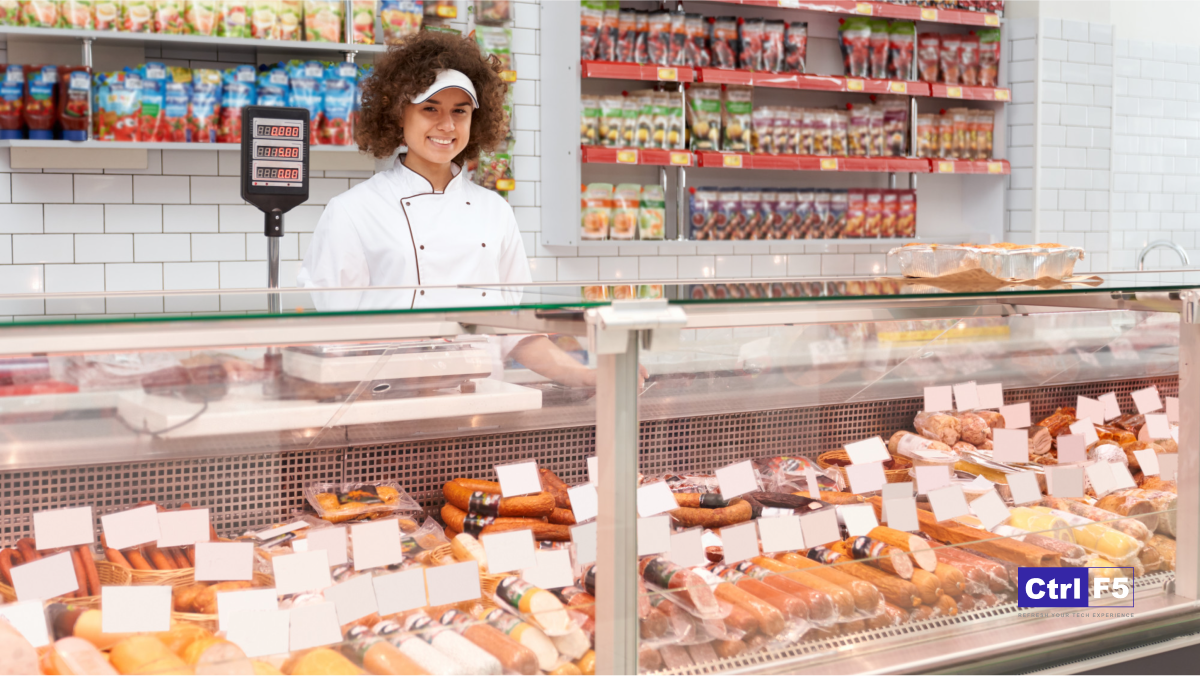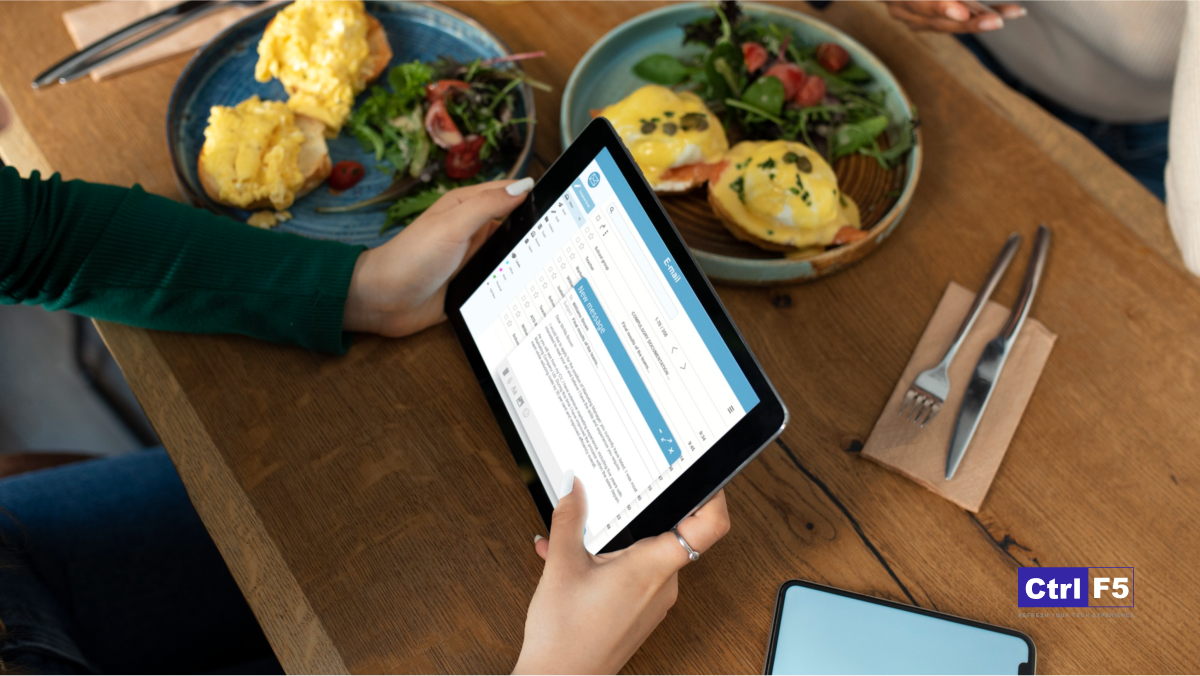How To Sell Food Online In 8 Easy Steps
- Anurag Pandey
- Last updated on May 15, 2024
- eCommerce, Shopify, Shopify Plus, Woocommerce
- 11 minutes read
Table of Contents
Toggle“Food is not rational. Food is culture, habit, craving, and identity.”
“Food” is more than just a source of nourishment; it is a language that speaks to our senses and draws people together. Sharing your culinary exploits on Instagram has become a joyful routine, whether you’re a food expert, a dedicated chef, or simply someone who likes the art of cuisine. Do you enjoy cooking or baking? Have you ever had the honor of convincing a loved one to forego takeout? If you said yes to either question, you probably want to learn how to sell food online.
Selling food allows you to express your creativity while tapping into a thriving business. According to Statista, the food and grocery market will be worth approximately 4.2 trillion US dollars by 2027.
Everyone enjoys delicious cuisine, and we all have to eat every day. So, regardless of ecommerce trends, when it comes to selling food online, there should always be an audience.
Starting an online food business from home might be difficult, whether it’s the secret family hot sauce recipe or a selection of your tried and true cookies. There’s a lot to think about, from acquiring supplies to making sure you’re legally compliant. Fortunately, all you need is a little instruction to start and operate a profitable Internet food business. Everything you need to know to get started, including how to overcome the hurdles of selling food online, is provided below.
We’ve simplified the procedure into eight simple steps. We’ll go over the most crucial steps you need to take to get started and ensure
Your at-home food company is legal, safe, and profitable.
Whether you are planning to start a food business or scale it by going online, here is the full guide on how to sell food online.
8 Steps to Start an Online Food Business
1. First, go for the General Food Laws
Food products are classified into two categories by the Food and Drug Administration (FDA): “high-risk” and “low-risk”.
Domestic kitchens are permitted to create low-risk food products online. Baked foods, dried fruits, jams, candies, and oat flakes are all included in this category.
In the meantime, high-risk food must be produced in professional kitchens. Dairy, seafood, and frozen foods are examples of foods that are susceptible to microbial contamination.
Whether you opt to cook at home or in a commercial kitchen, you’ll need to become acquainted with the local regulations that you’ll be expected to observe. If you opt for how to sell food online through a supplier rather than handling the food personally, you must examine the supply chain to ensure that your ingredients are in good condition.
Whatever your strategy, remember that federal, state, and local officials are here to assist you! Because it is their business to know the laws inside and out, they are an excellent resource to contact.
2. Go For Your Niche
Food is an extremely broad industry. Although you might be tempted to sell “food for anyone,” the more specific you get with your niche, the more likely you are to stand out. Start by thinking about which food types you’re passionate about. Do you love making bread, or can you whip up delicious pasta in minutes?
If you don’t have a specific preference, some initial market research could inspire you. Use a keyword research tool to see what people are currently searching for in the food industry. Alternatively, you can look into trending food ideas, like plant-based meals, vegan products, and artisanal food products. A few niche options include:
- Custom cake and novelty foods
- Organic, natural, fair-trade foods
- Food made for dietary restrictions (Gluten-free or dairy-free)
- Gourmet, small-batch, and artisanal foods
If you’re just getting started selling food products online, it might be best to focus on items that don’t require a big investment. For instance, you can make candies, dried herbs, canned products, and baked goods without buying specialist equipment. Keep it simple and fun in the beginning.
3. Conduct a study on the market
Market research helps you understand your target audience, competitors, and the market you are going to enter. After clarifying your niche, you should draw a picture of your customer. What interests, tastes, and lifestyles do they have? What kind of food do they prefer? Which type of platform is trending, whether B2B or B2C commerce platforms will enhance your food business, and so on.
Then, identify your target market, outlining your strengths, weaknesses, threats, and opportunities (well-known as a SWOT analysis). Market research also includes deep research on trends and competitive analysis.
The target audience is wide as we all love to eat. But those who are more likely to order food online are people of a young age and likely on-the-go consumers. Busy people order food online more often. However, you can add to your target audience family feeders, healthy lifestyle lovers, and vegans – it all depends on your niche and the products you want to sell.
4. Source Your Supplier
You’ll need a supplier whether you’re preparing your own meals or purchasing premade things to sell. The difficult part is determining which ones are credible.
Sites like Food Master can help you find vendors who specialise in the items you require. After you’ve compiled a list, you should look for certificates and ask for references.
This is all fairly normal, so don’t be scared to inquire about a supplier’s credentials. Remember that anything you get will directly represent your firm. If the provider claims that its produce is organic, don’t just take it at face value; investigate into it.
5. Create Your Brand, Packaging and Labelling
You should have a good concept of what food you want to sell and how you want to produce it at this time. You’ll also have thought about your branding. It is now time to put your decisions into action.
- Company Name
A company name should be three things:
- Memorable,
- Relevant and
- Spells, which customers can remember easily.
For example: ‘Mary’s cupcakes’ is topical and simple to remember, but will it stick in people’s minds?
Try to be inventive. Think outside the box and solicit feedback from others. If you intend to sell worldwide, make certain that the name is not distorted or lost in translation.
- Brand Colours
Color isn’t just a shade – it’s an emotion. People are affected by the colours you choose. Through the colours you choose, you can be bold and motivating, heated and passionate, or cool and inventive.
Food firms tend to use bright colours when it comes to psychology. They’re entertaining, straightforward, and can entice impulse purchases. Yellows, reds, and oranges are all connected with rich foods, but greens and blues are associated with health and vigour.
If you want to sell your food products online through your website, ecommerce builders such as Wix, Shopify, Woocommerce, Bigcommerce, and Squarespace have great options to pick from. Even better, each includes a choice of distinct color palettes that you can use to guarantee that your brand is reflected in every aspect of your organisation.
- Product Imagery
Your product photos are a customer’s initial point of contact with your cuisine, and first impressions are everything!
We advocate paying for professional product pictures unless you consider yourself a talented photographer. This can assist in getting your cuisine to jump off your website and into a customer’s cart.
If you’re going to invest in professional photography, then you also need a platform that will display those photographs to their greatest potential. Shopify, allows you to construct a visually stunning online store so your customers may feast their eyes before tasting the actual thing! Plus, It also features extensive marketplaces for beautiful Shopify themes and strong Shopify apps.
6. Price Your Products
Although food is your actual love, it’s understandable that you’re in business to make money.
Pricing is one of the most difficult components of running a business. Too low and you won’t make a profit, but too expensive and you’ll scare away clients. Fortunately, there are methods for determining whether your price is successful. It’s all very well creating a smart brand with a wonderful USP, behind which sit some delectable treats – but, as the old saying goes,’ money talks.’
Regardless of how amazing your products are, you must know how to price them. In the long run, under- or over-valuing your food may cause your firm to fail. So, Finally, there is no one magic price formula that works for everyone. Know your costs and continue to tweak until you get it correct.
7. Create Your Online Store
You are almost ready to begin selling food online.
However, you will first require a website. While blogs, podcasts, and social media may help you draw clients from all over the web, your website will be the core of your online food business.
Begin with a well-known store builder, such as Shopify, and create something that will appeal to your target demographic. You also have the option to enlist the services of Shopify Experts to bring your project to a success.
You’ll also want to make sure your cuisine looks as appealing as possible. Indeed, when it comes to selling food online, it is best to make your potential buyers salivate! That is why high-quality product images are essential. Additionally, write epic product descriptions to entice them to buy. The images and the written content need to compel your website visitors to take action.
You’ll also need:
- An About page: To assist customers in getting to know you.
- A Contact Us page: For any consumer inquiries.
- A FAQ section: With details on your suppliers
- Any certifications or accreditation: To demonstrate the safety of your products
- Creating a blog page: In terms of content marketing
- An approach for generating leads: Pop-ups or landing pages, for example, can be used to entice users to join your email list.
Today’s leading store builders include everything you need to get started selling food online.
8. Promote Your Food Business
After you’ve created your company, you can start marketing your food brand. It’s time to go all in and make your products as appealing as possible. On the internet, there are various good strategies for grabbing attention. Because most consumers enjoy viewing food photographs on their social media platforms, food companies should mostly grasp and target social media in the first step.
You can share everything from Instagram Stories to Facebook Ads for your delicious fineness. Alternatively, why not experiment with guest blogging? Work with a well-known food influencer to post your recipes on their website. Alternatively, approach an influencer personally and ask them to recommend your products.
Other excellent online food business marketing tactics include:
- Posting recipes on Pinterest: Visual forums are frequently an excellent source of food buyers. Sharing recipes for what people can do with your goods or ingredients can help get people interested in your offering.
- Offering fantastic deals: Reward your early customers as much as possible with discount codes, certificates, and promotions. Free samples of new goods, especially if distributed to influencers, can help build interest in your food.
- Selling through other businesses: You may collaborate with larger brands and shops to get your product into new places. Simply make sure to search around to verify you’re getting a decent deal on profit margins.
- Providing cooking instruction: Get customers interested in your cuisine by giving them learning opportunities that will help them grow new recipes.
How to sell food online: Conclusion
Operating your own internet food business is a fun and frequently rewarding method to realize your entrepreneurial goals. You’re already on the right route if you have the necessary elements, such as a terrific website, a fantastic product, and a reasonable pricing structure.
If looking over that jewellery Business as your passion, and you want to sell your amazing homemade embroidered bracelets and earrings online, the barrier to entry is relatively low. And your product is unlikely to make anyone ill or sick. But when it comes to food, though, safety is always a worry. Remember to be extremely cautious when selecting suppliers, adhering to health and safety regulations, and constructing food packaging. The food industry is highly regulated, and even minor mistakes can be disastrous to your firm. Be cautious, and always do your homework before diving in.
We at ControlF5 can help you to start your dream of selling cosmetics. Also, you can Hire Shopify Developers to construct an eCommerce store for you that will sparkle brightly like a diamond.
Anurag Pandey
Recent Posts
Categories
Hire Developers
About us
Popular Posts
Tags
Related Articles

10 Dropshipping Shopify Apps for Shopify Stores 2024
Dropshipping is not an easy business to get started; it requires time, strategy, and a proper way of operation. However, identifying how to choose dropshipping apps for the shopify store and using the proper tools helps to develop a successful dropshipping business.

Best Dropshipping Suppliers For Shopify Stores in 2024
Are you looking for how to find the best dropshipping suppliers for shopify? Then this piece of content is especially for you…!
Dropshipping is a wonderful way for future eCommerce entrepreneurs to scale their businesses.
How to Use Upsell: 10 Techniques to Boost Your Sales
Ah, the upsell—the salesperson’s best friend. When done correctly, it can also be very popular with clients. Many businesses use ads, emails, seasonal deals, and coupon codes to drive traffic and acquire new consumers. However, many ecommerce store owners overlook the need to raise the average order value.
Sign up for our Newsletter













